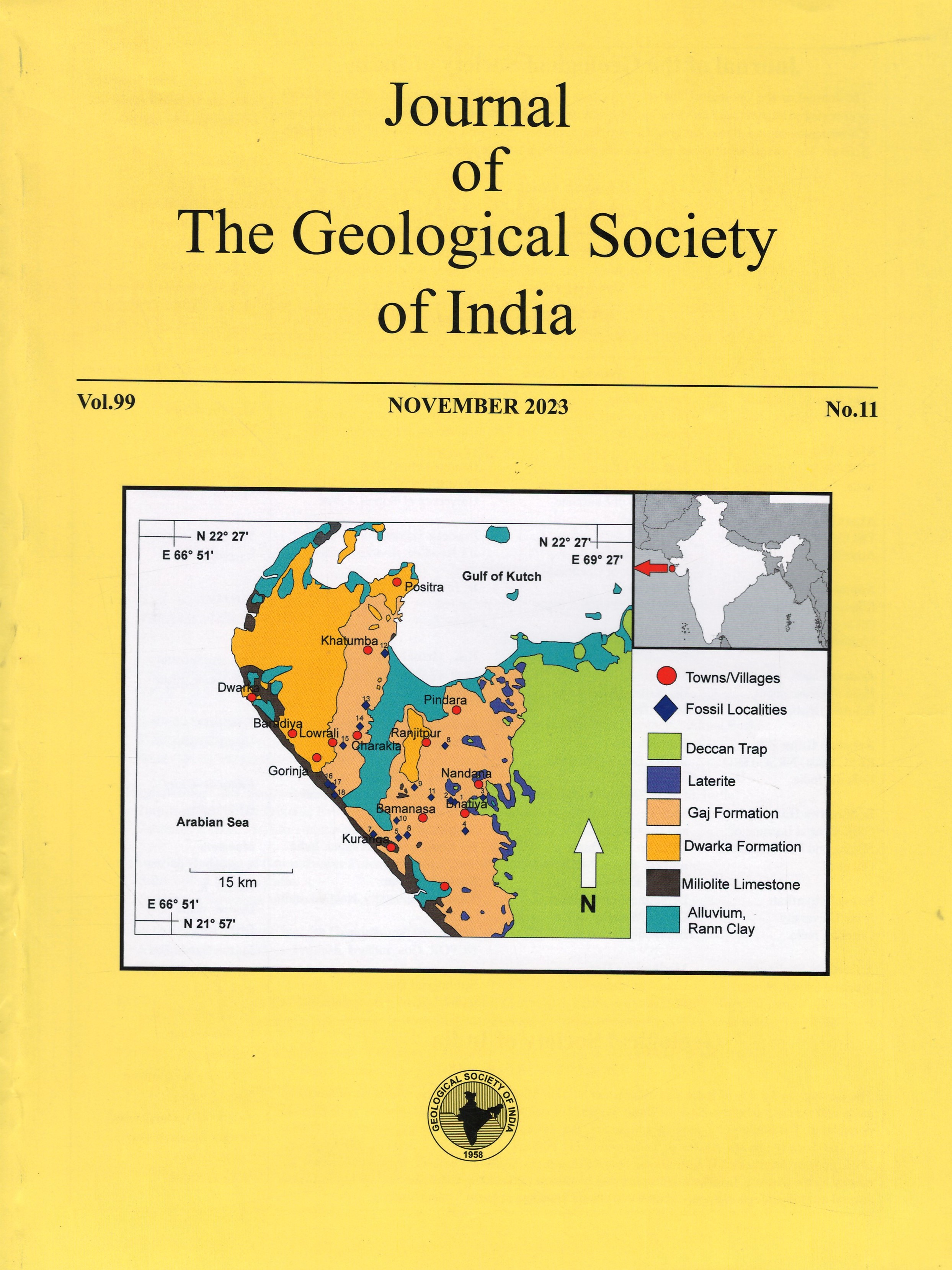Morphotectonic and Geomorphic Study of the Sub-Himalaya in the Haridwar-Kotdwar Region, India: Implications for the Tectonic Evolution and Segment Variability
DOI:
https://doi.org/10.1007/s12594-023-2504-9Keywords:
No Keywords.Abstract
Morphotectonic and geomorphic analyses are used to understand the tectonic evolution of Sub-Himalaya of the Haridwar-Kotdwar region. The Sub-Himalaya in this region is divided into three segments. The western segment is stacked between the Ganga Tear Fault and the Haridwar Fault, the central segment is stacked between the Haridwar Fault and Khoh River Fault, and the eastern segment is east of the Khoh River Fault. Various geomorphic indices like, Valley floor width to height ratio (Vf), Gradient Length Anomalies (GLA), Normalized Steepness Index (Ksn), Chi analysis and Hypsometric Index (HI) are used to infer the spatial variability in the tectonic evolution of Sub-Himalaya of the Haridwar-Kotdwar region. The Vf shows very low Vf values in the western and the eastern segments and relatively higher Vf values in the central segment. The Ksn gives anomalously high values in the central segment where the rivers cross the thrusts, compared to the western and eastern segments, which show lower values. The results of Chi analysis predict an increased tectonic activity in the sub-Himalayan section of the central segment, which is shown as high values of linear regression Chi-Ksn. The GLA shows negative anomalies along the thrusts (Main Boundary Thrust, Boksar Thurst and Haldu Paro Thrust). The results of all indices indicate that the thrusts (Boksar Thurst and Haldu Paro Thrust) in the central segment are neotectonically active as there is an increased value of Ksn and Chi-Ksn, and negative GLA whereas the frontal part of the western and the eastern segments are more active as there are low Vf values compared to the central segment. Thus, the results of morphometric analysis help to understand the tectonic evolution of the sub-Himalaya in this region.

 Abhishek Kralia
Abhishek Kralia






